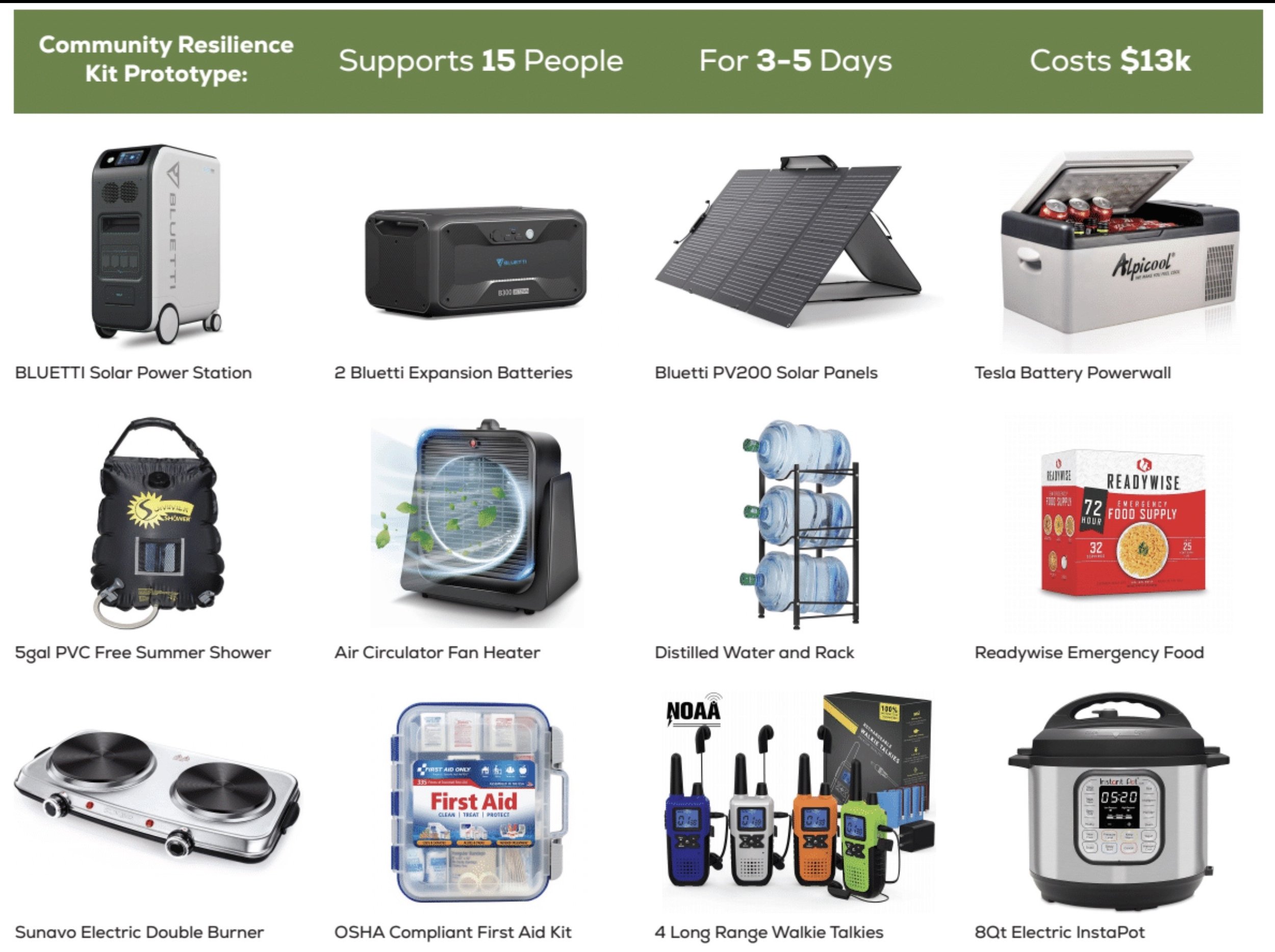How Can We Make Our Existing Properties More Resilient To Climate Change?
Ensuring that our residents have access to the resources and utilities needed in case of an emergency is a challenge we at Holos Communities have been working to address.
After conducting an analysis of our portfolio to assess natural disaster risks such as fire, flood, earthquake, air quality, and food access we created a Resilience Dashboard that helps us analyze and prepare for the risks that are specific to each building, general to the region, and increasing as our infrastructure ages and climate changes. Part of this analysis came from our own challenges when facing a blackout at our office building at a critical moment. One of the most crucial elements was ensuring that people had access to electricity, a gap most often addressed by solar power.
But adding solar to most buildings isn’t feasible (lack of roof space) so we are prototyping a Community Resilience Kit that will ensure our tenants have access to life safety essentials including renewable electricity, heating, cooling, refrigeration, and cooking in the event of a black out, earthquake, or other disaster.
Our resilience kit will provide portable solar panels and batteries to maintain health and safety features in a building’s community room in the event of a black out or other disaster. This includes heating and cooling, refrigeration for food and medicine, and recharging for phones and radios in the event of a black out.
Having said that, in some case we are able to install sufficient panels to make a demonstrable difference. We’re in the process of adding rooftop solar to our Holt Family Apartments with SOMAH that will generate 70% of the building’s electricity.
Funds raised from this event will support a pilot community resilience kit for our NoHo Senior Villas, a 49-unit senior development. The kit will contain the following:

